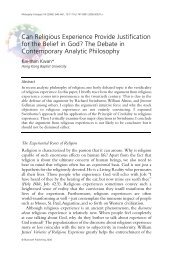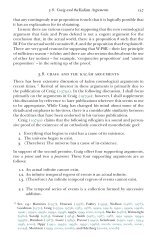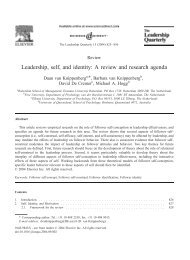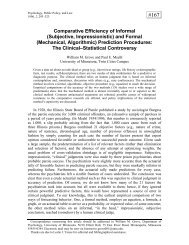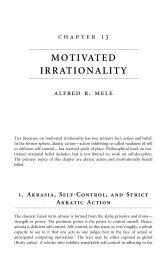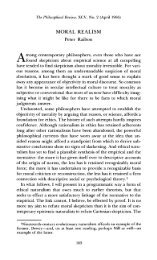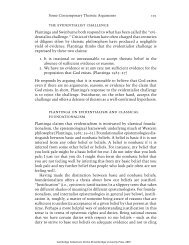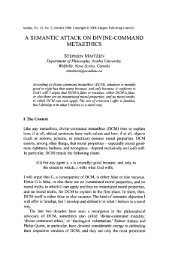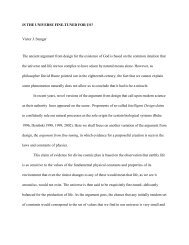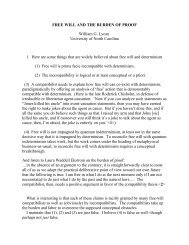Atheism and Theism JJ Haldane - Common Sense Atheism
Atheism and Theism JJ Haldane - Common Sense Atheism
Atheism and Theism JJ Haldane - Common Sense Atheism
Create successful ePaper yourself
Turn your PDF publications into a flip-book with our unique Google optimized e-Paper software.
Reply to Smart 183<br />
was the light of men. The light shines in the darkness, <strong>and</strong> the darkness has not<br />
overcome it . . . The true light that enlightens every man was coming into<br />
the world . . . And the Word was made flesh <strong>and</strong> dwelt among us, full of grace<br />
<strong>and</strong> truth . . . And from his fullness have we all received grace upon grace . . .<br />
(John 1: 1–14)<br />
In the space of these few lines the evangelist informs the Greeks <strong>and</strong> the<br />
Greek-speaking Jews of Alex<strong>and</strong>ria that what the philosophers have long<br />
sought after – the logos, or true account of the nature of things – has been<br />
with God from eternity <strong>and</strong> is that through which all things were made; <strong>and</strong><br />
that this very same creative principle (for some Jews the ‘Wisdom of God’)<br />
came into the world in the person of Jesus to be its teacher <strong>and</strong> saviour. 9 Thus<br />
the logos of philosophy <strong>and</strong> the Messiah of Judaism are identified: Christ (the<br />
‘anointed one’) is the way, the truth <strong>and</strong> the life. To separate the philosophical<br />
theology from the historical claim would diminish each; the text is at<br />
once metaphysical <strong>and</strong> religious, a synthesis of reason, testimony <strong>and</strong> faith.<br />
Consider also the following verses from a eucharistic hymn attributed<br />
to St Thomas Aquinas <strong>and</strong> translated from the Latin by the Jesuit poet<br />
Gerard Manley Hopkins. It begins in contemplation of the consecrated host.<br />
According to Catholic teaching that which was a wafer of unleavened bread<br />
becomes, in the offertory of the mass, the body of Christ.<br />
Godhead here in hiding whom I do adore,<br />
Masked by these bare shadows, shape <strong>and</strong> nothing more,<br />
See, Lord, at thy service low lies here a heart<br />
Lost, all lost in wonder at the God thou art.<br />
Seeing, touching, tasting are in thee deceived;<br />
How says trusty hearing? That shall be believed;<br />
What God’s Son has told me, take for truth I do;<br />
Truth himself speaks truly, or there’s nothing true. 10<br />
Various features unite these two texts. First, what is believed of the consecrated<br />
host rests upon the words of scripture, both in the narratives of the<br />
Last Supper <strong>and</strong> in statements ascribed to Jesus such as those given in a later<br />
chapter of John: ‘Truly, truly I say to you, he who believes has eternal life.<br />
I am the living bread which came down from heaven; if any one eats of this<br />
bread, he will live for ever; <strong>and</strong> the bread which I shall give for the life of the<br />
world is my flesh’ (John 6: 47–51). Second, both are testimonies of personal<br />
<strong>and</strong> ecclesial belief: John <strong>and</strong> Aquinas write as individuals in union with<br />
religious communities defined by a common history in faith. Third, recognizing<br />
the limitations of the literal, they both use analogical <strong>and</strong> metaphorical<br />
language: the Word is life <strong>and</strong> is a truth-giving light; the Godhead is masked



